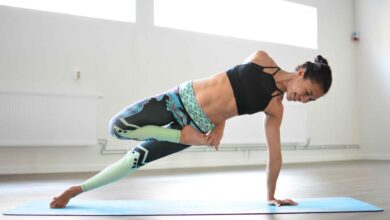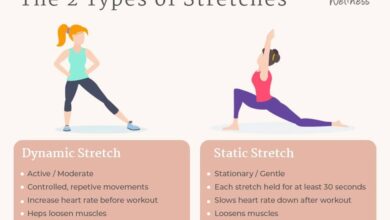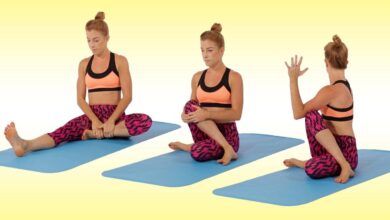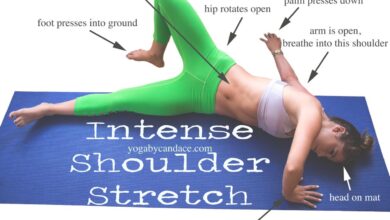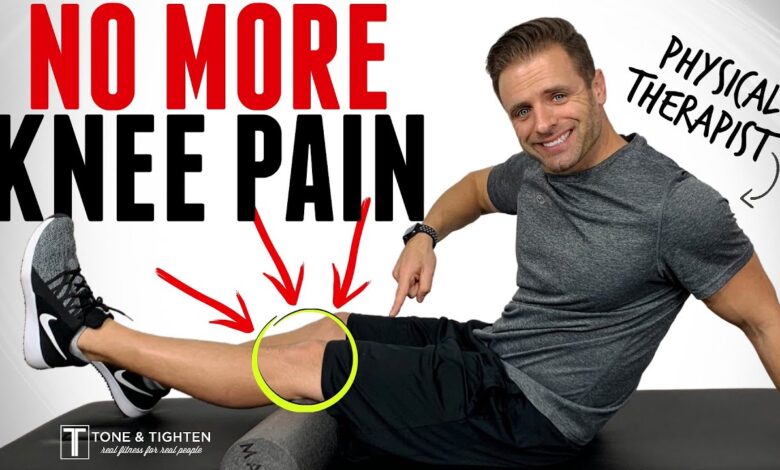
The Best Stretches for Knee Pain: Relieve Discomfort and Improve Mobility
The best stretches for knee pain can be a game-changer for anyone experiencing discomfort in their knees. Whether you’re dealing with the aches of osteoarthritis, the stiffness of tendonitis, or the lingering effects of a meniscus tear, targeted stretches can help alleviate pain, improve flexibility, and boost overall knee health.
Knee pain can stem from a variety of factors, including overuse, injury, and even lifestyle choices. But before we dive into the stretches, let’s understand the root causes of knee pain and how stretching can make a real difference.
Stretching plays a vital role in managing knee pain by enhancing flexibility, increasing range of motion, and improving blood flow to the joint. By gently lengthening muscles and tendons surrounding the knee, stretching can help reduce muscle tension and inflammation, ultimately contributing to pain relief.
Research has shown that incorporating stretching into a regular routine can be an effective strategy for managing knee pain, alongside other therapies like physical therapy and medication.
Understanding Knee Pain
Knee pain is a common ailment that can affect people of all ages. It can range from a mild ache to a sharp, debilitating pain that makes it difficult to walk. Understanding the different types of knee pain and their potential causes is crucial for effective treatment and management.
Types of Knee Pain and Their Causes
Knee pain can arise from various sources, and pinpointing the cause is essential for appropriate treatment. Here’s a breakdown of common types of knee pain and their underlying causes:
- Mechanical Pain: This type of pain is often caused by overuse, injury, or structural problems within the knee joint. It can manifest as a sharp, localized pain that worsens with activity. Common causes include:
- Ligament Injuries: Tears or sprains in the ligaments, which are strong bands of tissue that connect bones, can lead to pain, swelling, and instability in the knee.
These injuries often occur during sports or other activities involving sudden twisting or impact.
- Meniscus Tears: The menisci are C-shaped pieces of cartilage that act as shock absorbers in the knee joint. Tears in the meniscus can cause pain, swelling, and catching or locking sensations in the knee.
- Tendonitis: Inflammation of the tendons, which connect muscles to bones, can cause pain and stiffness in the knee. This condition is often associated with overuse or repetitive activities.
- Ligament Injuries: Tears or sprains in the ligaments, which are strong bands of tissue that connect bones, can lead to pain, swelling, and instability in the knee.
- Inflammatory Pain: This type of pain is often associated with inflammation within the knee joint. It can be characterized by swelling, redness, and warmth around the knee. Common causes include:
- Arthritis: This condition involves the breakdown of cartilage in the joints, leading to pain, stiffness, and swelling.
Finding the best stretches for knee pain can be a journey, much like discovering the latest food trend. Just as we’re seeing if chickpeas are the new cauliflower, are chickpeas the new cauliflower , we’re constantly seeking new ways to ease discomfort.
Stretching regularly, especially targeting the hamstrings and quads, can help improve flexibility and reduce knee pain, just like a good diet can contribute to overall well-being.
Osteoarthritis, the most common type, is a degenerative condition that often develops with age. Rheumatoid arthritis, an autoimmune disease, can also affect the knee joint.
- Bursitis: Inflammation of the bursae, fluid-filled sacs that cushion the joints, can cause pain and swelling around the knee.
- Arthritis: This condition involves the breakdown of cartilage in the joints, leading to pain, stiffness, and swelling.
- Referred Pain: This type of pain originates from another part of the body and is felt in the knee. It can be caused by conditions such as:
- Back Problems: Nerve irritation or compression in the lower back can sometimes cause pain that radiates down the leg and into the knee.
Finding the best stretches for knee pain can be a real game-changer, especially if you’re also trying to shed some pounds. While we’re on the topic of weight loss, have you ever wondered if is grapefruit actually that great for weight loss ?
Anyway, back to those knee stretches – remember to listen to your body and stop if you feel any pain. Consistency is key!
- Hip Problems: Conditions such as osteoarthritis or hip bursitis can cause pain that can be referred to the knee.
- Back Problems: Nerve irritation or compression in the lower back can sometimes cause pain that radiates down the leg and into the knee.
Common Knee Pain Conditions
Several common conditions can contribute to knee pain. Understanding these conditions can help individuals identify potential causes and seek appropriate treatment:
- Osteoarthritis: This degenerative joint disease occurs when the cartilage in the knee joint breaks down, leading to pain, stiffness, and swelling. It is a common condition that often develops with age or as a result of injury. Osteoarthritis can be managed with pain relievers, physical therapy, and weight loss.
- Tendonitis: Inflammation of the tendons, which connect muscles to bones, can cause pain and stiffness in the knee. Common types of tendonitis in the knee include patellar tendonitis (inflammation of the tendon connecting the kneecap to the shinbone) and hamstring tendonitis (inflammation of the tendons in the back of the thigh).
Tendonitis is often associated with overuse or repetitive activities and can be treated with rest, ice, compression, and elevation (RICE) therapy.
- Meniscus Tears: The menisci are C-shaped pieces of cartilage that act as shock absorbers in the knee joint. Tears in the meniscus can cause pain, swelling, and catching or locking sensations in the knee. Treatment for meniscus tears depends on the severity of the tear and may involve physical therapy, pain relievers, or surgery.
Lifestyle Factors Contributing to Knee Pain
Lifestyle choices can significantly impact knee health. Certain factors can increase the risk of developing knee pain:
- Activity Levels: Engaging in high-impact activities or repetitive movements can put stress on the knee joint, increasing the risk of injury or developing conditions like tendonitis or osteoarthritis. It’s crucial to warm up properly before exercise, use proper form, and avoid overexertion.
Finding the best stretches for knee pain can be a journey, but it’s one worth taking. Strengthening the muscles around your knee joint can provide incredible support and alleviate pain. If you’re new to strength training, a great resource is this beginners guide to strength training , which can help you get started safely and effectively.
Once you’ve built a solid foundation, you’ll be ready to explore specific exercises that target the muscles surrounding your knees, leading to improved flexibility, stability, and ultimately, less knee pain.
- Weight: Excess weight puts extra stress on the knee joints, particularly the cartilage. Losing even a small amount of weight can significantly reduce the load on the knees and alleviate pain.
- Nutrition: A balanced diet rich in calcium, vitamin D, and other essential nutrients is important for maintaining strong bones and healthy joints.
Benefits of Stretching for Knee Pain: The Best Stretches For Knee Pain
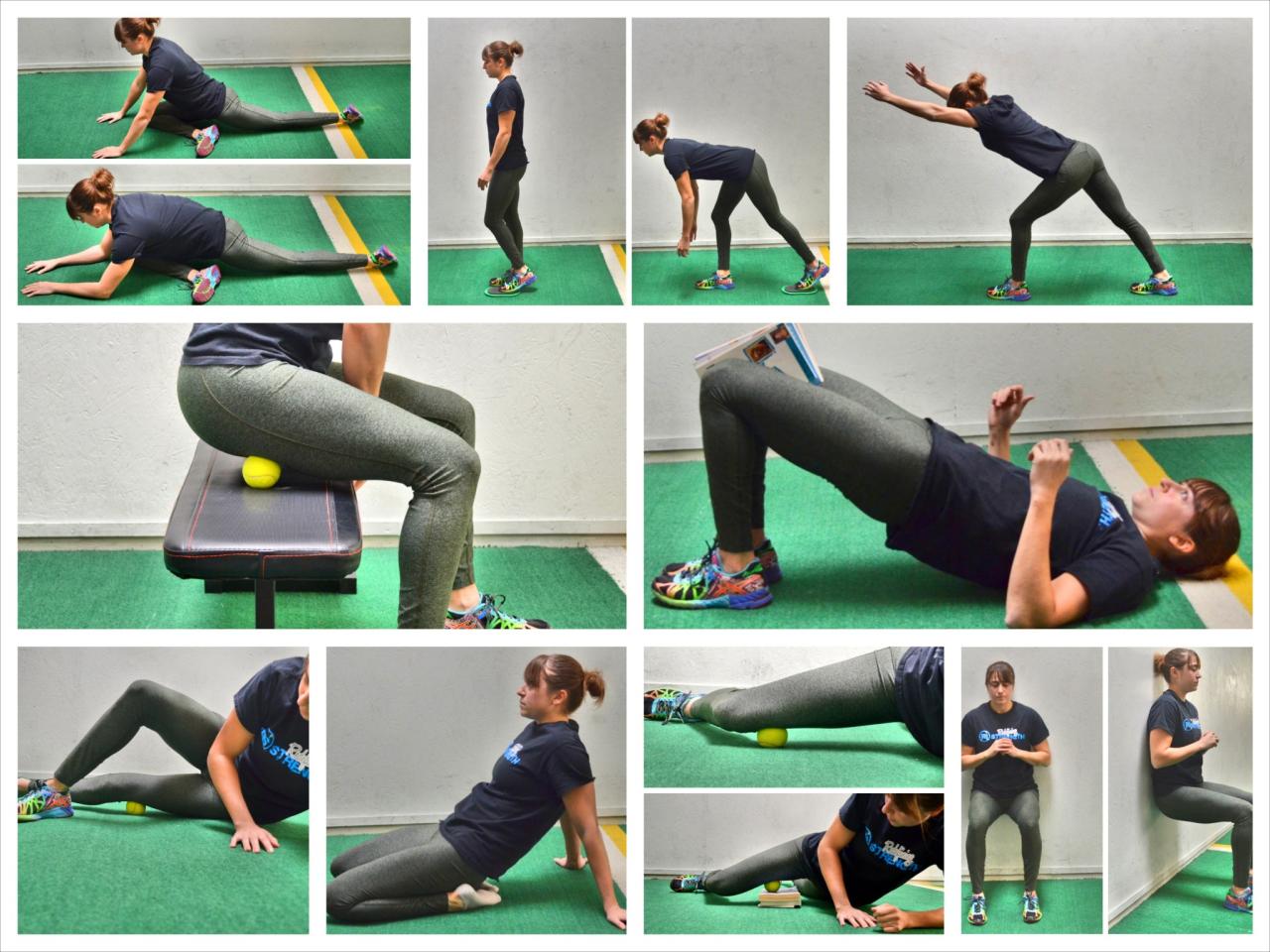
Stretching is a crucial component of managing knee pain. It can significantly improve your overall well-being by enhancing flexibility, increasing range of motion, and promoting better blood flow to the knee joint. Stretching also helps reduce muscle tension and inflammation, which are common contributors to knee pain.
Improving Flexibility and Range of Motion
Flexibility refers to the ability of your joints to move through a full range of motion. When your knee joint is flexible, it can move smoothly and efficiently, reducing the risk of stiffness and pain. Stretching helps increase flexibility by lengthening muscles and tendons around the knee joint.
A greater range of motion allows you to perform daily activities with ease and comfort.
Reducing Muscle Tension and Inflammation
Tight muscles around the knee can contribute to pain and discomfort. Stretching helps to relax these muscles and alleviate tension. By reducing muscle tension, stretching can also decrease inflammation in the knee joint. Inflammation is often associated with knee pain, and stretching helps to reduce it by improving blood flow to the area.
Research Findings on the Effectiveness of Stretching for Knee Pain
Several studies have shown that stretching can be an effective strategy for managing knee pain. For instance, a study published in the Journal of Orthopaedic & Sports Physical Therapy found that a stretching program was effective in reducing knee pain and improving function in individuals with osteoarthritis of the knee.
Essential Stretches for Knee Pain
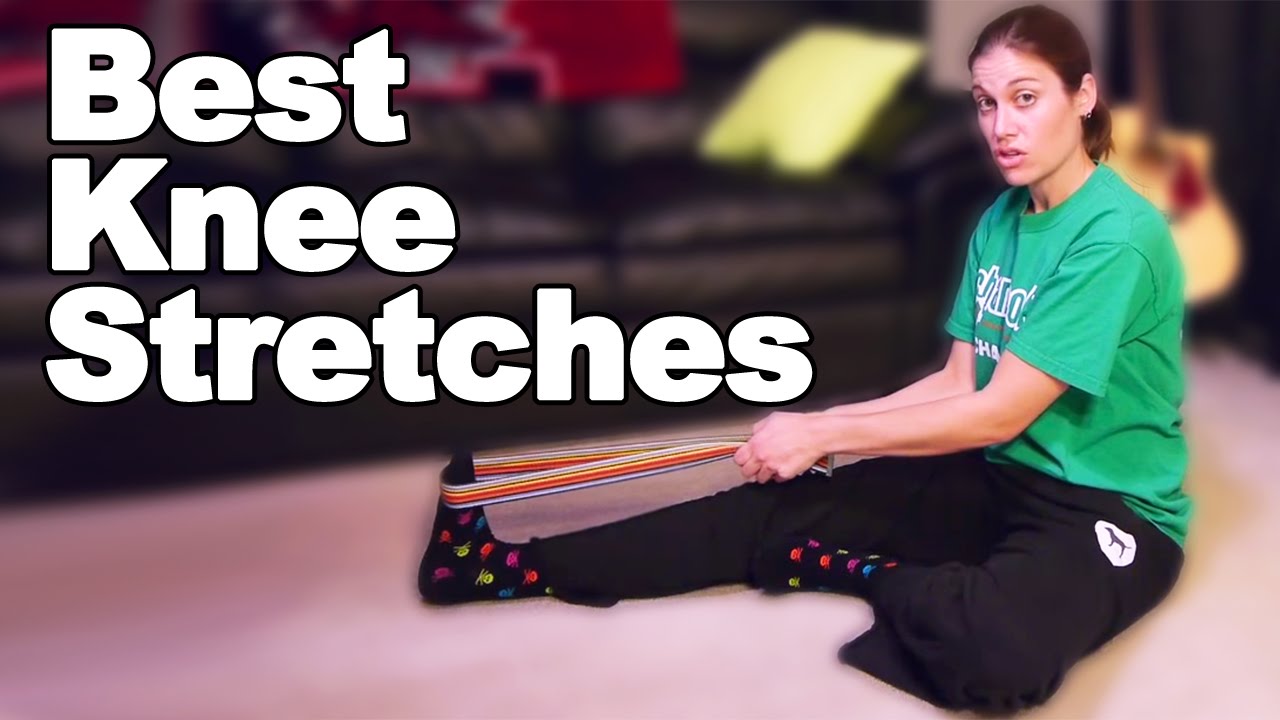
Stretching is an important part of managing knee pain. It can help improve flexibility, strengthen muscles, and reduce stiffness. Regular stretching can also help prevent future injuries.
Essential Stretches for Knee Pain
These stretches can help improve flexibility and range of motion in the knee joint. They can also help to strengthen the muscles that support the knee, which can reduce pain and improve stability.
| Stretch Name | Description | Instructions | Benefits |
|---|---|---|---|
| Quadriceps Stretch | This stretch targets the quadriceps muscles, which are located at the front of the thigh. |
|
|
| Hamstring Stretch | This stretch targets the hamstring muscles, which are located at the back of the thigh. |
|
|
| Calf Stretch | This stretch targets the calf muscles, which are located at the back of the lower leg. |
|
|
| Knee Flexor Stretch | This stretch targets the knee flexor muscles, which are located at the front of the hip. |
|
|
Considerations for Stretching with Knee Pain
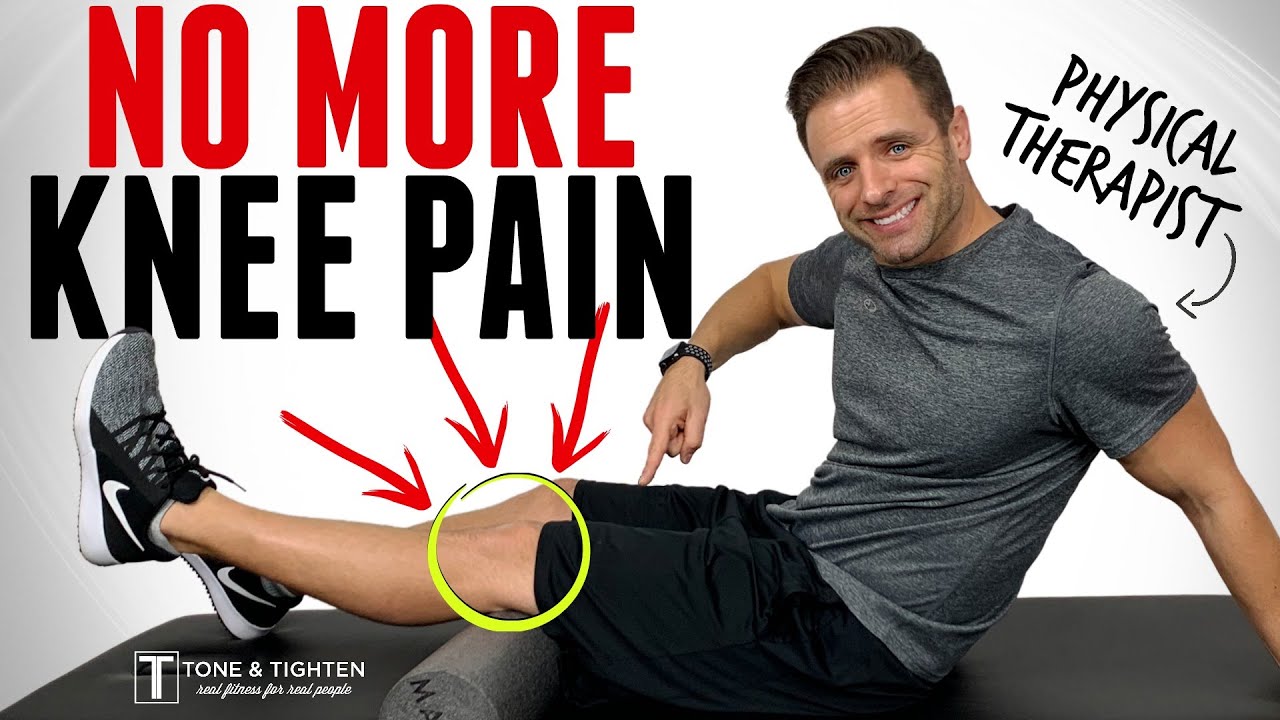
Stretching can be a valuable tool for managing knee pain, but it’s essential to approach it with caution. Overstretching or performing exercises that aggravate your knee can worsen your condition.
Potential Risks of Stretching for Knee Pain
Overstretching can lead to muscle strain or ligament damage, which can exacerbate knee pain. It’s crucial to understand the potential risks and take precautions to prevent injuries.
- Overstretching:Stretching beyond your body’s limits can cause muscle strains or ligament tears, which can worsen knee pain and limit your mobility. It’s crucial to stretch gently and gradually increase the range of motion as your knee improves.
- Exacerbating Existing Injuries:Certain stretches may aggravate existing knee injuries, such as meniscus tears or ligament sprains. It’s essential to consult a healthcare professional to determine safe and appropriate stretches for your specific condition.
- Incorrect Technique:Performing stretches with incorrect form can put undue stress on your knee joint, potentially causing further damage. Proper technique and guidance from a physical therapist or healthcare professional are crucial to ensure safe and effective stretching.
Modifying Stretches for Individual Pain Levels and Limitations
Adjusting stretches to suit your individual pain levels and limitations is crucial for safe and effective exercise. This may involve:
- Reducing the Range of Motion:Start with smaller stretches and gradually increase the range of motion as your knee feels more comfortable.
- Using Support:Employing props like a chair or wall can help stabilize your body and reduce stress on your knee during stretches.
- Modifying the Intensity:Adjust the intensity of the stretch by holding the position for shorter durations or applying less pressure.
- Listening to Your Body:Pay attention to your body’s signals and stop if you experience any pain or discomfort.
Importance of Listening to Your Body, The best stretches for knee pain
Always prioritize your body’s well-being. If you experience any pain during stretching, stop immediately. It’s crucial to listen to your body’s signals and avoid pushing yourself beyond your limits.
“Pain is your body’s way of telling you something is wrong. It’s essential to listen to these signals and adjust your exercise routine accordingly.”
Complementary Therapies for Knee Pain
Stretching can be a valuable tool for managing knee pain, but it’s not the only option. Complementary therapies can provide additional support and help you achieve better overall knee health. These therapies often work by addressing underlying causes of knee pain, improving muscle function, and reducing inflammation.
Physical Therapy
Physical therapy is a specialized form of treatment that focuses on restoring movement, reducing pain, and improving function. A physical therapist can assess your specific needs and create a customized treatment plan that includes exercises, manual therapy, and modalities like heat or ice.
Exercises for Physical Therapy
- Quadriceps Strengthening:Standing with your back against a wall, bend your knee and lift your foot off the ground. Hold for a few seconds and repeat. This exercise strengthens the muscles on the front of your thigh, which are important for knee stability.
- Hamstring Strengthening:Lie on your back with your legs straight. Bend one knee and pull your heel towards your buttock. Hold for a few seconds and repeat on the other side. This strengthens the muscles on the back of your thigh, which also contribute to knee stability.
- Calf Strengthening:Stand facing a wall with your feet shoulder-width apart. Step back with one foot, keeping your heel on the ground. Bend your front knee and lower your body until you feel a stretch in your calf. Hold for a few seconds and repeat on the other side.
Massage Therapy
Massage therapy can help reduce muscle tension and improve circulation, both of which can contribute to knee pain relief. A massage therapist can use various techniques to target specific areas of the body, including the muscles around the knee joint.
Acupuncture
Acupuncture is a traditional Chinese medicine practice that involves inserting thin needles into specific points on the body. It is believed to stimulate the body’s natural healing mechanisms and reduce pain. While the exact mechanisms are still being studied, acupuncture has been shown to be effective for treating a variety of conditions, including knee pain.
Importance of Consulting a Healthcare Professional
While stretching can be beneficial for managing knee pain, it’s crucial to remember that it’s not a substitute for professional medical advice. Seeking guidance from a healthcare professional is essential for proper diagnosis and treatment of your knee pain.A healthcare professional, such as a doctor, physical therapist, or orthopedic specialist, can accurately assess your condition and determine the underlying cause of your knee pain.
They can rule out serious conditions like arthritis, ligament tears, or fractures, and recommend appropriate treatment options tailored to your specific needs.
When to Seek Immediate Medical Attention
It’s crucial to seek immediate medical attention for knee pain if you experience any of the following:
- Sudden, severe pain, especially if accompanied by swelling, bruising, or inability to bear weight.
- A popping or snapping sensation at the time of injury.
- Fever, redness, or warmth around the knee joint.
- Numbness or tingling in the leg or foot.
- Pain that worsens at night or with rest.
These symptoms could indicate a serious injury or underlying condition that requires prompt medical attention. Delaying treatment could worsen your condition and lead to complications.
Final Review
Remember, consistency is key when it comes to stretching for knee pain. Incorporate these stretches into your daily routine, gradually increasing the intensity and duration as you feel more comfortable. While stretching can be a powerful tool for managing knee pain, it’s essential to consult a healthcare professional to address the underlying cause and develop a comprehensive treatment plan.
By understanding the benefits of stretching and incorporating it into your daily routine, you can take a proactive approach to managing knee pain and improving your overall knee health.

